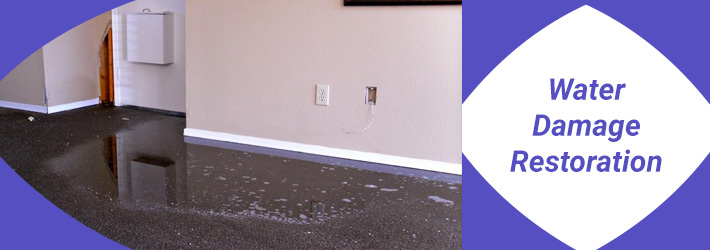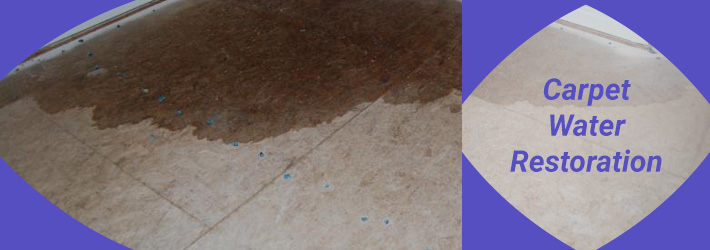Sources and Prevention of Water Damage in Carpets
Water damage in carpets is something that just… happens. A leaky roof, a broken pipe, an overflowing toilet, or an all-out flood, it will happen in your life at worst situations and dealing with it will be torture long after the damage has subsided.

Water Damage in Carpets
It’s hard to believe that even water, one of the basic essentials of life, can be so sneaky and destructive. It is critical for survival, yet it possesses the power to be hostile. You might come home one day to find your home flooded with contaminated water, the drywall spoiled, and the carpeting drenched. But the worst will be yet to come: mould.
In our today’s article, we will share with you some common sources of water damage in carpets and how to prevent them. Read on till the end.
Causes of Water Damage in Carpets
Try to be realistic for a minute! Flooding is not really that complex. It can be due to something as simple as a broken pipe or some unavoidable natural disaster. In most cases, water damage occurs due to our carelessness only. We leave the water running while it fills the tub in order to get the ringing phone. And within a few minutes of our happy chit-chat, the tub starts to overflow, water soaks the flooring and the ceiling of the room below it. This happens more often than you’d think.
Now let’s get back to our main topic: sources of water damage in carpets. The following list will not only help you in taking precautions and maintain equipment in case of emergency but also in including all possible situations in your insurance policy.
Clogged Toilets and Drains
Call a plumber and have your drainage system checked if the water rises higher than usual when you flush. Believe us, an overflowing toilet is the worst thing that can occur near your beautiful carpets. If the drainage system gets clogged, there is a possibility of sewage backup. Your carpet flooring will be soiled with the waste within a few minutes, which is NOT something you want.
Burst Pipes
Although not directly a source of major water damage, leaky faucets can be a sign of hidden problems in plumbing. When it comes to pipes, even minuscule damage should be addressed as soon as possible. Therefore, if you notice a faucet leaking, have it checked. Leaking pipes under sinks should be replaced completely.
The objective is to prevent any pipe from bursting unceremoniously. If you fail to keep a check on it, trying to save a few bucks, you will end up losing a lot more. Replacing an entire wet carpet, along with the cost of repairing water damaged furniture, can cost you thousands of dollars. So better to be on the safe side and call a plumber instead.
Leaks from Appliances
While the damage from a leaking appliance such as dishwasher, refrigerator, freezer, or washer will not be exactly catastrophic, it can still incur permanent damage on carpets if not treated properly.
It depends mostly on the size and extent of the leak. A serious leak can flood the entire carpet flooring ruin it completely. So it goes without saying that in order to avoid such problems in water-based appliances you need routine inspection and maintenance.
Leaking Roof Ceiling
Ceilings can get damaged and require repair every five to seven years. Even though they are meant to withstand the wear and tear of weather, the elements holding them together fall apart with heavy rain. The damaged rooftop will allow water to penetrate the ceiling and spread on your carpet. This can be easily prevented with regular maintenance and proper roof installation.
Natural Disasters
While floods and storms don’t happen every day, there are several regions in Australia that are prone to natural disasters like tornadoes, hurricanes, fierce winds, and heavy rainfall. It is not much you can do to safeguard against such damage. Just make sure to add any possible natural calamity on your insurance policy.

Types of Water Damage in Carpets
Let’s be honest. No one is happy to find their bathroom flooded because they left the tap running. But standing in a bathroom flooded with clean water from your tub won’t give you any goosebumps. On the other hand, standing with your legs soaked in sewage water will. So, as you can imagine, there are several types of water damage. The source of water determines the technique and risk involved in treating damaged carpeting. According to the standard guide for water damage treatment by IICRC, water damage can be classified into three categories.
Category 1: Clean Water: –
This category is the safest of all and includes water damage caused by direct rainfall impact, broken pipes, and leaky faucets. The water has a minimal amount of contamination and there is no serious risk in direct contact with humans or pets.Category 2: Grey Water: –
Grey Water includes the damage caused by leaky appliances and pipes under kitchen sinks. As the water involved does not contain any fecal matter, it cannot be ruled as hazardous, but it’s not entirely fresh either. Greywater is contaminated with litter and can be harmful if the carpet is left unattended for a long time.Category 3: Black Water: –
The category name says it all. This water is highly contaminated as the source of such damage is usually sewage backup, an overflowing toilet, or drainage blow up. Blackwater is fatal for humans and pets alike as it usually contains fecal matter and urine.
What to Do After Water Damage in Carpets?
In case of water damage in carpets, it’s important that you remember the following two points:
- All types of water damage are not the same. It is crucial to determine the category of contaminated water before proceeding with any method of treatment.
- If not treated within due time, clean water won’t take long to degrade to the second category. Moreover, the wet carpet will allow mould and mildew to thrive, increasing the risk of allergies.
The restoration of water damage depends on a large extent to the source. Let us explain this in detail.
A professional carpet water damage technician will assess the source and extent of damage before starting the treatment. What do these technicians they check? Among several things other than the category of contaminated water and the fabric of your carpet, they have to check:
Whether the entire carpet is damaged or only a small part of it
If the contaminated water is still puddled on or near carpet flooring
Nature and material or carpet fabric and the flooring beneath it. Wooden floorboards soak water and hence need to be either replaced or restored before placing back the carpet.
Of course, water damaged carpets should be treated as soon as possible. However, your first priority should be to get the source of water fixed. After all, what is the point of hiring a professional carpet cleaner if your roof is still leaking? You need to be quick on your feet as the longer contaminated water is allowed to sit in carpets, the harder and costlier it becomes to restore them.
The process of Carpet Water Damage Restoration in Brisbane varies case by case, but in general, it involves four simple steps:
- Extraction of residue water
- Removing damaged carpet padding and the furniture placed on top of it
- Sanitizing the affected areas
- Drying the carpet
Your Biggest Enemy – Mould
Whatever be the source of water damage, wet carpeting is bound to develop mould over time.
It’s not only the water that causes disease from the germs it leaves behind. The aftermath of severe water damage will affect not only your carpet but also the health of you and your family. Mould and fungal spores reproduce quickly in damp surroundings. And even though it is present almost everywhere in our environment, the development of mould in confined residential areas is bad news.
What’s more, is that the damage caused by mould spreads very quickly. Leave it for a few days and the mould will take over every furniture and fabric in the room which is even slightly damp. Therefore, wet carpets should be sanitized and dried as soon as possible.
Drying, Ventilation, and Air Circulation
While we strongly recommend calling a professional water damage restoration service, here are some home-based tips to help you mitigate and take care of the damage yourself:
- Remove excess water from carpeting using rag cloths or a wet/dry vacuum cleaner
- Sanitize the carpet using a suitable disinfectant
- Use air movers and dehumidifiers to dry the carpet properly. Increase ventilation by opening all doors and windows. Use fans to boost air circulation.
Is Water Damage Avoidable?
No one can play god when it comes to water damage. But more often than not, all it takes is a few quick steps to prevent a large scale disaster. Let’s recap what we have discussed so far about the sources of water damage in carpeting and you will automatically learn how to prevent it.
- Don’t overlook water stains on your roof ceiling
- Waterproof all wooden floorboards
- Regular maintenance of water-based appliances, especially if they are kept near carpets
- Periodical check-up of the entire plumbing system

Hire Our Company Experts for Best Results
Flood Water Damage Restoration Brisbane offers quick, effective, and reliable professional carpet water damage restoration services in and around Brisbane. Our trained carpet technicians have more than 20 years of experience in cleaning, sanitizing, drying, repairing, and restoration of water damaged carpets.
Call us today to schedule an appointment and get a free quote for our carpet drying services. You can also get in touch with our team by filling out the small contact form on the right side of your screen. We provide 24*7 emergency carpet water damage restoration and carpet drying services to ensure your convenience.
